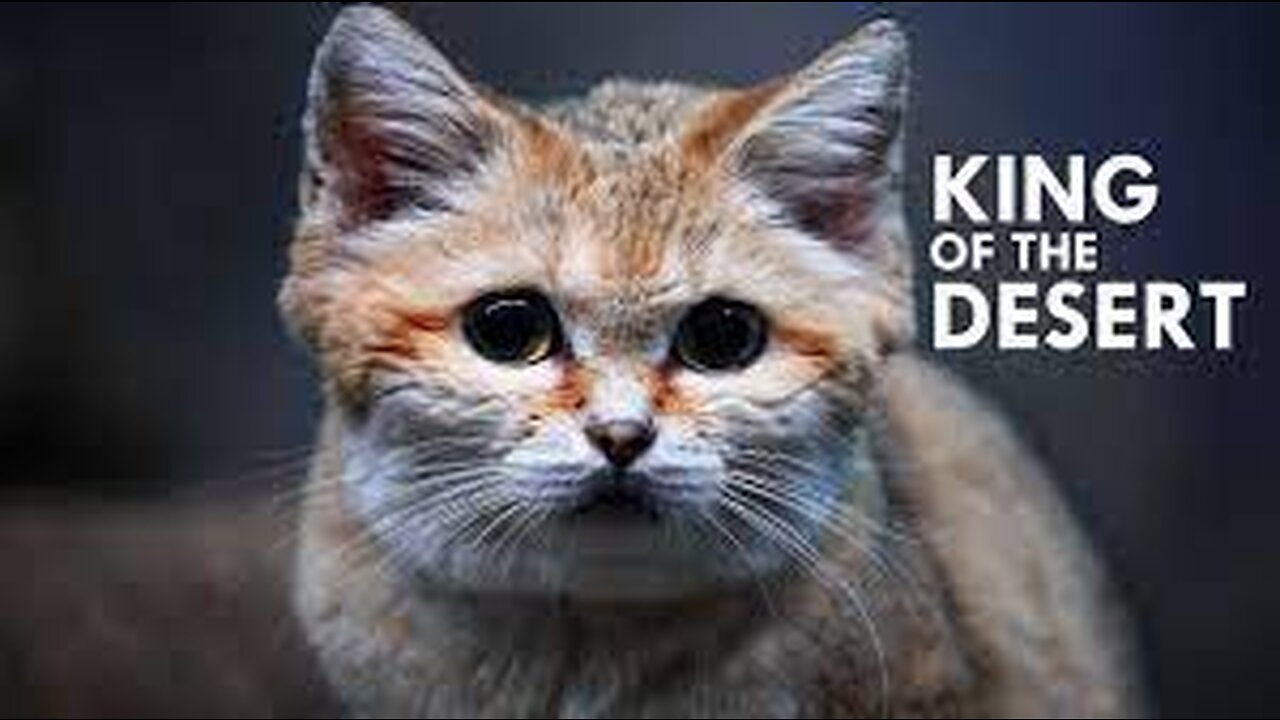Premium Only Content

Sand Cat: The King of the Desert | #Animallovers
Wildlife scientists have known the sand cat since its discovery in the Algerian Sahara in 1858. They named the kitty after the French Expedition leader, General Margueritte. The other common name is the sand-dune cat.
Today the kitty is seen in Morocco, Algeria, Niger, Chad, & Egypt. It is a small wild cat in the Felinae subfamily.
The kitty weighs about 2.7 kg. The length of the cat’s body is about 50 cm & its ringed tail is around 30 cm long.
The cat has sand-colored fur and a broad head with ears that point up & out. Fur covers its paws to protect its pads from the hot sand.
Habitat:
Sand cats live in the Sahara & Arabian deserts, but they are also present in Iran & Pakistan. They live in sandy & rocky desert areas, primarily flat terrain with small bushes & little grass.
The sand cat hides in underground burrows, out of the hot sun during the day.
Humans, wolves, snakes, and large birds are the predators of the sand cat.
Wildlife studies find that this kitty is not a territorial fighter. Instead, it takes turns sharing its burrow with its mates & sand cat mothers raising their young.
By Payman sazesh — camera trap, CC BY-SA 3.0, https://commons.wikimedia.org/w/index.php?curid=24849743
So what does the cat eat?
The night hunter, kitty kills & eats rodents, lizards, insects & some snakes.
Wildlife experts reveal that the cat does not drink water. Instead, it gets fluids by eating raw fresh, killed prey.
The researchers observed sand cats hunting young cape hare, hoopoe lark, desert monitor, sandfish, & venomous vipers.
On the IUCN Red List of endangered animals, they classify the sand cat as the least concerned species.
-
 2:07:26
2:07:26
Kim Iversen
5 hours agoFAFO: Trump's ‘Deport or Get Tariff’d’ Plan Worked | Did Trump Reveal The REAL Gaza Death Toll?
27.2K58 -
 LIVE
LIVE
Danny Polishchuk
10 hours agoDeportations Begin + Guest Jay Dyer | Low Value Mail Live Call In Show
1,379 watching -
 1:10:08
1:10:08
Donald Trump Jr.
7 hours agoWhat Real Leadership Looks Like, Live with Sen Bernie Moreno | TRIGGERED Ep.210
122K203 -
 1:38:57
1:38:57
Glenn Greenwald
6 hours agoWith Tulsi's Hearing this Week, Establishment Attacks her with Lies About Snowden & 702; U.S. Journalist Arrested in Switzerland for Criticizing Israel; China's Leap Forward in AI | SYSTEM UPDATE #397
55.7K72 -
 57:43
57:43
The StoneZONE with Roger Stone
3 hours agoWhat Will The JFK Assassination Files Reveal? | The StoneZONE w/ Roger Stone
19K8 -
 18:24
18:24
Tundra Tactical
5 hours ago $0.36 earnedWhats New With HRT Tactical Gear at SHOT Show 2025
39.8K5 -
 23:27
23:27
Rethinking the Dollar
5 hours agoWealth Protection SECRETS Learned from Wildfires w/ Paul Stone
36.6K3 -
 DVR
DVR
Flyover Conservatives
21 hours agoInsider Reacts to Trump’s 100 Hours: Davos, WHO, Climate Change, DEI… - Alex Newman | FOC Show
17.6K -
 1:04:30
1:04:30
Battleground with Sean Parnell
8 hours agoPresident Trump Is Flooding The Zone
104K10 -
 LIVE
LIVE
We Like Shooting
14 hours agoWe Like Shooting 595 (Gun Podcast)
139 watching